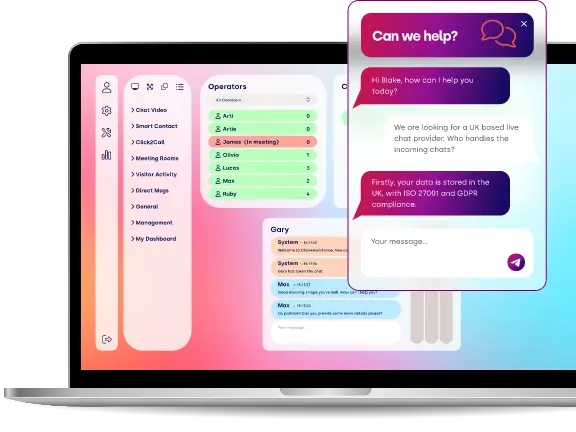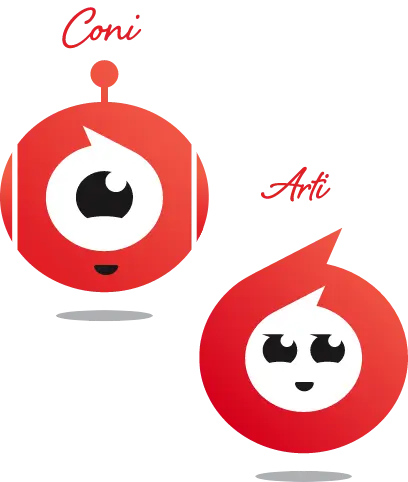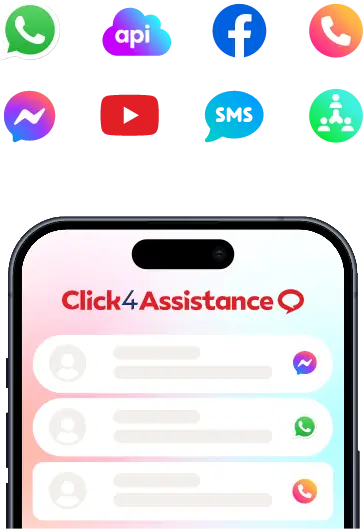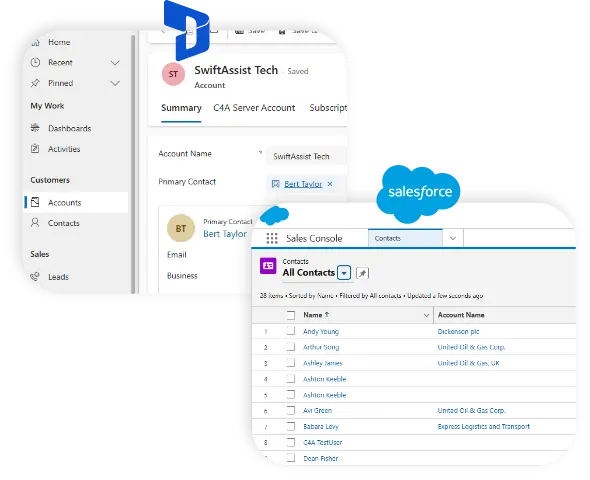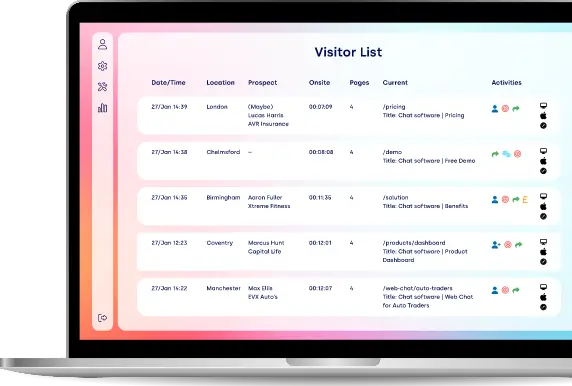WhatsApp for Business Multiple Users – A Contact Centre Guide
WhatsApp for Business, suitable for multiple users allowing contact centres to handle conversations quickly and with a consistent voice. It’s not all about replying to messages!
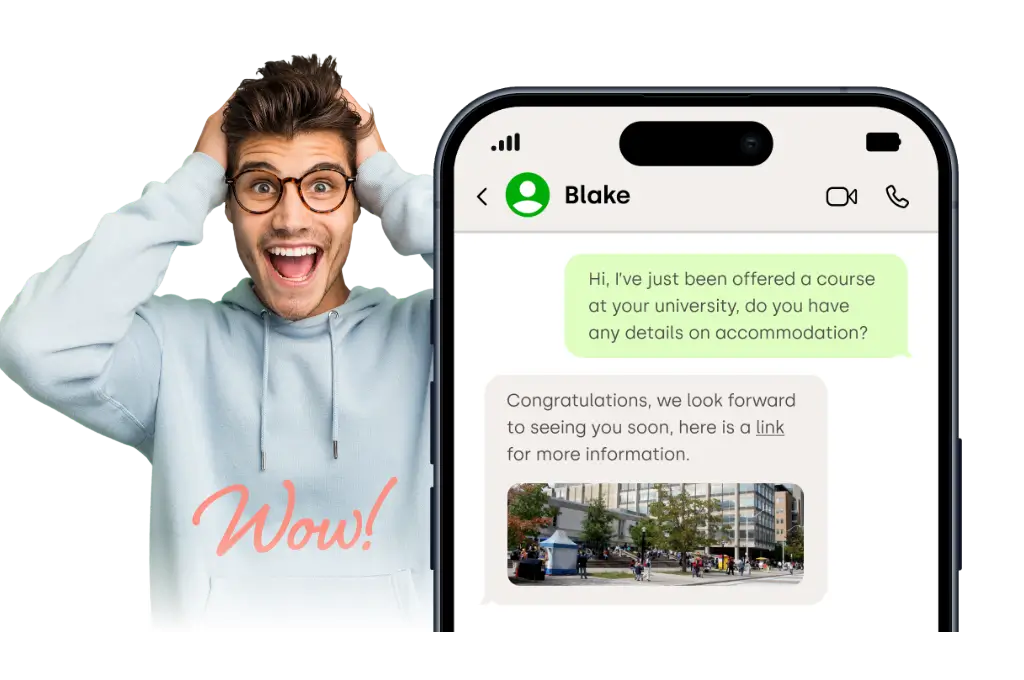
Customer communication has truly evolved. The days of relying just on phone calls and emails for reaching out to customers are behind us. Today, messaging apps like WhatsApp are leading the way, especially for quick, easy, and personal chats.
For contact centres that juggle hundreds or even thousands of customer interactions every day, WhatsApp has become a game-changer. But there’s a catch: the standard WhatsApp Business app isn’t designed for multiple users. That’s where the WhatsApp Business API comes into play.
If you’re exploring ways to handle conversations on a larger scale, it’s worth looking into and learning more about how AI-driven customer engagement is transforming messaging platforms.
The Importance of WhatsApp for Contact Centres
Let’s talk about why WhatsApp is a game-changer for contact centres.
Did you know that WhatsApp has over 2.7 billion active users around the world? It’s not just another message app; it’s become the go-to digital alternative to a traditional phone line for many consumers today. People use it daily to chat with friends and family, and they expect that same level of convenience when reaching out to businesses.
This shift is huge for contact centres. Customers simply won’t tolerate long wait times or the hassle of constantly checking their emails anymore. They want quick replies, personalised interactions, and support that’s available 24/7. WhatsApp provides that instant communication option, but it needs to be managed effectively. According to WhatsApp Business statistics, over 175 million people message businesses via WhatsApp every day, showing just how high demand already is.
Here’s the truth: when customers reach out via WhatsApp, they expect the same quick response they would get from calling a hotline. If your contact centre can’t keep up with that demand, the overall experience takes a hit. Imagine trying to run a traditional call centre with just one phone – sounds impossible, right? Managing WhatsApp for a contact centre with only the basic business app comes with its own set of challenges.
What are the Challenges of Using WhatsApp for Business for a Single User?
WhatsApp Business was originally crafted with small businesses in mind – think local shops or solo entrepreneurs who just need to manage a handful of customer enquiries. It’s free, easy to set up, and works seamlessly on one device. But therein lies the problem: it wasn’t built for bustling environments like contact centres.
Here are the main issues:
- Single-device limitation: Only one person can actively manage the account, which makes it tough for multiple agents to share the workload.
- Scalability challenges: As the number of customers grows, things can get messy-messages pile up, customers face long wait times, and agents can feel swamped.
- Inconsistent replies: With just one user, maintaining a consistent brand voice is tricky. One person might respond casually, while another (using their personal device) might take a completely different approach.
- Missed conversations: Imagine a flood of messages pouring in while one person tries to juggle everything - it’s inevitable that some customers will slip through the cracks.
For a contact centre, these limitations create serious operational challenges. Customers expect quick responses, and a single-user WhatsApp setup just can’t keep up. The result? Delays, frustration, and ultimately, a loss of trust.
👉 This is where the WhatsApp Business API shines, enabling multiple users, multiple devices, and real scalability. Articles on API-use cases show that with API you can bring in unlimited agents, integrate with your CRM, automate flows, use templates, and gain more control.
WhatsApp Business API – Multi-User Capabilities
Let’s take a closer look at a powerful tool: the WhatsApp Business API. Unlike the regular WhatsApp Business app, this API isn’t limited to just one device or phone number. It’s built to support platforms that can handle multiple users, making it perfect for contact centres with large teams of agents.
To get started, businesses need to set up a Facebook Business Manager account (now called Meta Business Manager). This account is your gateway to verifying your business identity and linking your WhatsApp Business number. If you skip this step, you won’t be able to tap into the full suite of API features that enable multi-user management. See WhatsApp’s Business Messaging Policy and the Business Platform docs for more details.
Once you're all setup, your contact centre can:
- Assign multiple agents to handle conversations from the same number
- Integrate WhatsApp smoothly into a CRM or helpdesk system
- Use automation and AI to manage message queues effectively
- Scale operations without the limitations of traditional phone systems
However, there’s a key rule to keep in mind: the 24-hour response window. WhatsApp has a guideline that requires businesses to reply to messages initiated by customers within 24 hours. After that, you can only send pre-approved template messages, like order updates, appointment reminders, or follow-ups.
For contact centres, this policy helps reduce customer spam, but it also means agents need to stay on their toes for incoming messages. Multi-user setups make this manageable, as one agent can pick up right where another left off, ensuring no context is lost.
What are the Benefits of Multi-User WhatsApp for Contact Centres?
When it comes to advantages of Multi-User WhatsApp for Contact Centres, the perks of the WhatsApp Business API go way beyond just having more people available to respond. Here’s how it’s changing the game for contact centres:
Scalability
Whether you’re juggling hundreds or even thousands of conversations, multiple agents can log in simultaneously. This means no more bottlenecks and ensures that every message gets the attention it deserves.
Collaboration
Supervisors can easily assign chats to specific agents, transfer conversations, or step in when things need to be escalated.
Consistency
Instead of dealing with different tones from various devices, all interactions happen under one unified business profile, creating a seamless experience.
Efficiency
With handy tools like quick replies, saved responses, and AI-driven routing, agents can handle more conversations in less time.
Analytics & Insights
The API offers access to reporting dashboards, allowing managers to keep an eye on agent performance, response times, and customer satisfaction levels.
Security and Compliance
Messages are encrypted, and role-based access helps protect against unauthorised use. For industries that have strict regulations, message logging and GDPR compliance are built right in.
“WhatsApp has become the modern contact centre’s lifeline. Without multi-user access, you’re essentially running a call centre with only one phone line.”
Common Applications in Contact centres
WhatsApp for Business has truly transformed the landscape of contact centre software, allowing teams to boost their efficiency and deliver exceptional customer engagement. Here are some key scenarios where it really excels:
- Customer Support
Contact centres can handle support tickets more efficiently by distributing workloads, escalating complex issues, and keeping all conversation history in one place. This not only speeds up response times but also ensures a consistent and high-quality customer service experience.
- Sales & Lead Development
Sales teams can instantly connect with leads, share detailed product information, and guide potential customers through the sales journey. With WhatsApp for Business, personalised interactions can happen on a larger scale, which helps increase lead conversion rates and enhances customer relationship management.
- Order Updates & Delivery Alerts
Thanks to WhatsApp business automation, companies can proactively send out order confirmations, shipping updates, and delivery notifications using Meta-approved templates. This keeps customers informed in real time, reducing uncertainty and the need for phone support, while also improving the overall customer experience.
- Feedback Gathering & Surveys
After resolving issues or completing transactions, agents can quickly send surveys or feedback links directly through WhatsApp. This seamless approach boosts response rates, gathers valuable insights, and helps contact centres continuously enhance customer satisfaction metrics.
- Crisis Response
During peak demand periods - like service outages, product recalls, or technical issues - multiple agents can respond simultaneously, cutting down wait times and reassuring customers. Integrated AI notifications and workflow automation ensure that urgent messages are addressed promptly, protecting the brand's reputation.
At the end of the day, having a 24-hour messaging window is crucial. Whether you're handling a support ticket or following up on a sale, quick responses are key to building trust and keeping customers engaged. Many contact centres are turning to WhatsApp automation tools to ensure that every message gets a reply, making for a faster and more reliable communication experience for customers.
What Tools and Platforms Support Multi-User WhatsApp?
Diving into the WhatsApp Business API can feel a bit overwhelming. That’s why many contact centres turn to third-party platforms or CRM integrations that work alongside the API. These tools make it easier to manage multiple agents, keep track of performance, and stay organised overall.
Here are some of the most common setups:
CRM Integrations
Platforms like Salesforce or HubSpot allow agents to handle WhatsApp conversations right from the CRM. This means they can access customer histories, notes, and past interactions all in one convenient spot.
Contact Centre Platforms
Many enterprise-level platforms now come with built-in support for the WhatsApp API. This lets contact centres manage WhatsApp, email, live chat, and even social media from a single dashboard.
AI Chatbots
These bots take care of initial enquiries - like FAQs, order tracking, or checking account balances - before handing off the conversation to a human agent.
Hybrid Models
The most effective setups usually combine automation with human support. A bot handles the first contact and then seamlessly hands over the conversation to an agent when things get complicated.
This strategy helps your contact centre run more smoothly, even during busy times.
All Messaging Channels from One Platform
Handle all your customer interactions from live chat, WhatsApp and Facebook Messenger within one powerful platform.
Challenges and Considerations of WhatsApp Business API
The WhatsApp Business API is a fantastic tool, but it does come with its own set of challenges. Before you dive in and implement it in your contact centre, there are a few important things to keep in mind:
- Cost Considerations: Unlike the free WhatsApp Business app, using the API means you'll face usage-based fees. These costs can vary by country and depend on whether the business or the customer initiates the message.
- Training for Agents: If your agents are used to handling support over the phone, they might need some training to adapt to written communication. In chat-based interactions, getting the tone, speed, and clarity just right is even more important.
Effective training ensures that agents are well-prepared to provide exceptional customer service through this platform. Check out this guide on training customer support agents for WhatsApp for some valuable tips!
- Keeping It Personal: Automation can be a great help, but if overdone, it might make customers feel like they're chatting with a robot. Finding the right balance is key.
- Message Overload: During busy times, you might find a flood of conversations happening all at once. If you don’t have effective routing in place, some messages could slip through the cracks.
This guide offers practical strategies for managing the flood of WhatsApp messages. It walks you through how to tackle large volumes of messages without breaking a sweat.
- Technical Setup: To get started with the API, you'll need to verify your account through Meta Business Manager, set up the technical aspects, and often get help from a solution provider.
If you’re looking for a thorough guide, check out this WhatsApp Business API setup manual.
Being prepared for these challenges will make your implementation smoother and boost customer satisfaction.
What are the Best Practices for Contact Centres?
If you want to make the most out of WhatsApp with multiple users, contact centres should follow a few key best practices:
Structured Workflows
Set up clear guidelines for how to direct messages. For example, have one team handle sales enquiries while another takes care of tech support.
Combine Automation with Human Agents
Use bots for common questions and routine tasks, but make sure human agents are on hand for more complex conversations.
Performance Monitoring
Keep an eye on important metrics like response time, resolution time, and customer satisfaction. Dashboards can give managers a quick overview of how things are going.
Personalisation
Always address customers by their names, refer back to previous interactions, and avoid generic responses that feel robotic.
Compliance & Data Protection
Make sure your WhatsApp communications comply with GDPR, HIPAA, or any other relevant regulations. It's crucial to securely store chat histories.
Respect the 24-Hour Window
Train agents to prioritise urgent enquiries and use pre-approved templates for follow-ups that happen outside of service hours.
By sticking to these guidelines, contact centres can deliver consistent, high-quality service while effectively scaling their operations.
The Future of WhatsApp in Contact Centres
WhatsApp has come a long way from being just a casual messaging app. For many businesses, it’s quickly becoming a cornerstone of customer service. Looking ahead, its role is only going to grow.
- Conversational AI: Expect to see deeper integration of AI that can handle natural conversations and learn from past interactions.
- Omnichannel Convergence: WhatsApp won’t be a standalone tool. Contact centres will increasingly manage WhatsApp, email, live chat, and social media all from one unified platform.
- Proactive Messaging: With customer consent, businesses will use WhatsApp to send proactive updates, reminders, and personalised offers.
- Voice & Rich Media: As voice messages, images, and videos become more popular in customer interactions, contact centres will need to adapt beyond just text.
“In the next five years, WhatsApp will be to customer support what email was in the 200s – the default channel of choice.”
Frequently Asked Questions (FAQs)
- Can multiple agents respond to the same WhatsApp number?
Absolutely! By using the same WhatsApp Business API (not the regular app), several agents can log-in, share the same number , and manage conversations seamlessly.
- What’s the difference between the WhatsApp Business app and the API?
The app is free and designed for small businesses that don’t get a ton of messages. In contrast, the API is a paid service that scales up nicely and is perfect for larger teams - especially contact centres that need multi-user access.
- How secure is WhatsApp for contact centres?
WhatsApp messages are encrypted end-to-end, and with the API, you can set up role-based access, keep compliance logs, and connect with secure CRMs.
- Is the WhatsApp API suitable for small businesses?
Generally, it’s better suited for medium to large enterprises. Small businesses with fewer chats can stick with the free app until they grow.
- Can AI handle WhatsApp messages before they reach agents?
Definitely! AI chatbots can take care of FAQs, order updates, or initial questions, and then hand off to agents for more complex issues. This teamwork boosts both speed and efficiency.
Conclusion
WhatsApp has truly transformed the way businesses connect with their customers. For contact centres, managing this channel means more than just responding to messages – it’s about creating a scalable, reliable, and personalised experience with every interaction.
The standard WhatsApp Business app simply can’t keep up with the flood of messages. But with the WhatsApp Business API, multiple users can collaborate, ensuring that no message slips through the cracks and every customer receives the quick, consistent service they deserve. According to the WhatsApp API Ultimate Guide from respond.io, one of the key advantages is precisely the ability to scale, organise team workflows, and integrate automation.
With improved workflows, better agent teamwork, automation, and compliance, multi-user WhatsApp setups turn contact centres into vibrant hubs of customer engagement. If your business is ready to expand and meet customers on their terms, using WhatsApp for business with multiple users isn’t just an option – it’s the way forward.
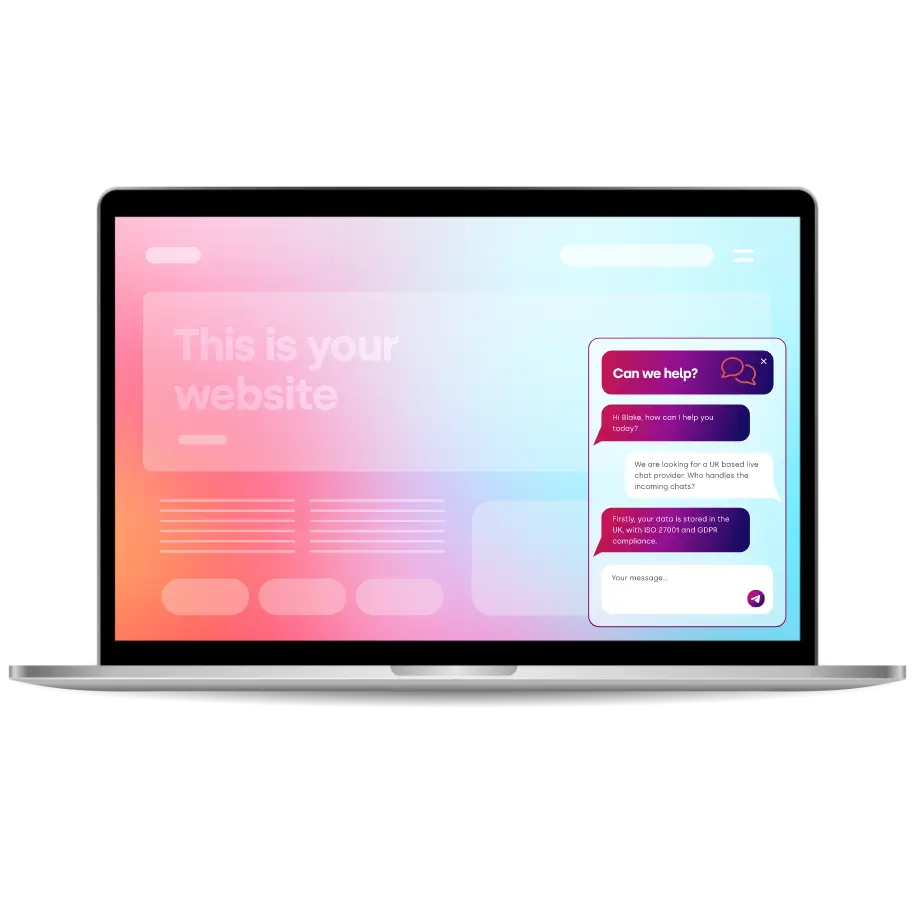
Thousands Trust Us. Will You?
From live chat to AI-powered chatbots and social integrations, Click4Assistance powers real-time engagement - fully UK hosted and trusted across industries.
